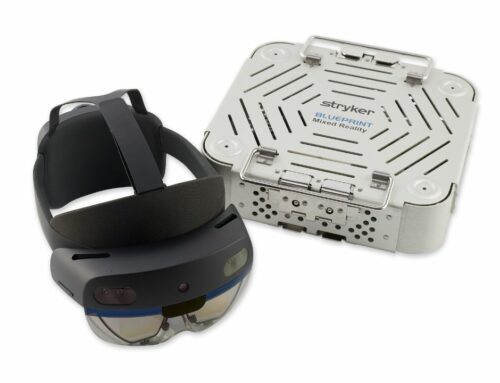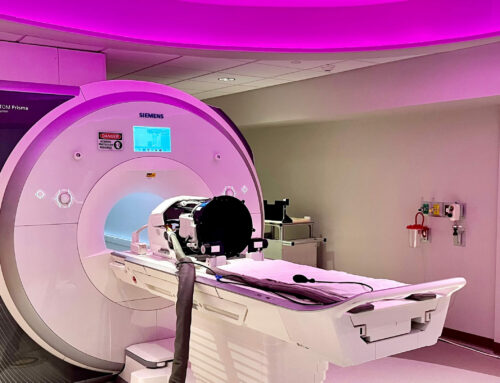By Linsey P. Gold, DO, FACOS, FACS, surgeon in private practice at Comprehensive Breast Care in Michigan
For any physician making treatment recommendations in relation to a cancer diagnosis, it’s of the utmost importance to have the right tools in one’s toolbox– as early on as possible– so that you, the patient and the rest of his or her medical team can make more informed decisions. As a surgical oncologist treating DCIS (stage 0 breast cancer), my initial conversation with the patient following diagnosis centers around assurance that she thoroughly understands her treatment options at our disposal to guide her through the case.
I explain that she has three general surgical treatment options for DCIS — lumpectomy alone, lumpectomy with radiation, and mastectomy– and that each yields the exact same long term survival rates. This begs the question, why would we use the most aggressive or even the second most aggressive option unless we can prove there’s benefit to it?
Since inception, the oncology field has adopted an attitude of “better safe than sorry” when approaching these treatment decisions. Unless there is a study saying otherwise, the default is to do “it”, whether “it” happens to be surgery, chemotherapy or radiation. And since the treatment that results from such an approach poses its own dangers, an ideal scenario for physicians is, of course, to take the guesswork out of the equation altogether.
Enter Precision Medicine
Medical oncologists have utilized genomic assays to treat breast cancer for the better part of the last two decades, but the same resources have only more recently become available to the radiation oncology specialty. One such test that my partner and I elect to run on each one of our patients is PreludeDx’s DCISionRT, a biological signature that combines biomarker analysis with traditional clinical pathology to produce a personalized result. The results come in the form of a score from 0.8 to 10 and is translated to a quantifiable percent of how likely a patient is to have a local recurrence of DCIS or invasive cancer with and without radiation following breast conserving surgery. The report shows both prognostic and predictive results. This means that DCISionRT can give us insight into a patient’s prognosis with and without the addition of radiation therapy (to breast conserving surgery) as well as predict the results of response to radiation therapy and its impact on the patient’s prognosis.
I use my patients’ DCISionRT scores to help inform my surgical decision making, but more importantly, to employ the multidisciplinary approach and to hold my peers accountable, just as they do for me. I have the pleasure of partnering with Dr. Frank Vicini on most cases and, together, we have developed a collaborative protocol that allows all parties involved to benefit from the information gathered through genomic testing. Although I don’t necessarily use the results to render a radiation treatment recommendation myself since that isn’t my specialty, I use it to prompt a conversation between the patient, myself and the physician that is making those calls. These results are particularly helpful during multidisciplinary tumor boards, but even in cases that don’t warrant a tumor board, they allow me to directly equip my patient, and my colleagues, with the right data to make the most informed treatment decision. And it allows my patient to feel more control over her diagnosis and better advocate what is in her best interest. Amid an overwhelming cancer diagnosis, it can be hugely empowering to send my patients into those discussions with a tangible piece of paper in hand analyzing their specific tumor’s biology.
As the saying goes, if you only have a hammer, everything’s a nail. We clinicians are human with human biases and instincts. As a surgeon, my instinct is to operate just as a medical oncologist’s is to medicate and a radiology oncologist’s is to radiate. Genomic assays such as this ensure that the right patients are getting the right treatment in spite of both our partiality and our imperfections in estimating patients’ risk benefit ratio on our own.
Recently published data in the Annals of Surgical Oncology reveals that 42% of physicians change their treatment recommendations after receiving their patients’ DCISionRT scores. Anecdotally, this number is no surprise to me nor any of my colleagues who have consistently ordered the test for our patients. Truly in about every other patient, I’m shocked to review their DCISionRT results and discover just how much standard pathologic features do not accurately reflect a tumor’s true biological characteristics. Using traditional methods, we tend to assume that patients under 50 with high grade or large tumors would more substantially benefit from treatment. But without genomic assays, that recommendation boils down to merely an assumption with roughly a 58% accuracy rate.
In a recent case study, I met a 45-year-old female with garden variety new calcifications on a mammogram. Her core biopsy showed grade three DCIS with necrosis and she came to me very much interested in breast conserving surgery. That is, until her DCISionRT score came back as a solid 10, the highest possible score with a high likelihood of invasive recurrence of 43%. With this knowledge in hand, she decided that even if she were to significantly lower her risk by receiving radiation therapy after lumpectomy of 11%, the remaining likelihood of battling cancer a second time was too high. Together with her entire medical team, we decided to perform a bilateral mastectomy and she was able to confidently forgo any further treatment.
In contrast, at around the same time I met a 56-year-old patient who also had grade three DCIS and new microcalcifications and comedonecrosis. She was PR negative and not strongly ER positive with extension into the lobules. While performing her breast conserving surgery we discovered about 7 cm of disease, which would usually be a major red flag signifying high risk in traditional clinical pathology. But after her DCISionRT score came back as low risk, 2.7, she too was able to confidently forgo radiation treatment as that would decrease her invasive recurrence risk from only 7% to 4%.
All of us clinicians have a very valid and warranted fear of both undertreating and overtreating. You only have to see one death from angiosarcoma to know that complications from radiation are fortunately uncommon, but they are real and usually devastating when they do occur. To approach that delicate line without using genomic testing is engaging in an outdated and risky guessing game. We only get better by utilizing the technology that becomes available to us and continuing to expand our toolbox.
About the Author
Formerly the Clinical Director of the Michigan Center for Breast Health, Dr. Gold joined Comprehensive Breast Care, in August, 2015. She is a Fellowship trained Breast Surgeon who entered practice in 2006. She was the Director of the Comprehensive Breast Center, Genesys Regional Medical Center from July, 2006-June, 2009 and has been in private practice since. She is actively involved in the American Society of Breast Surgeons, and has been certified in Breast Ultrasound since 2007.
She is actively involved in clinical research, and is an investigator and participant in a number of clinical trials, under the oversight of the National Cancer Institute.












